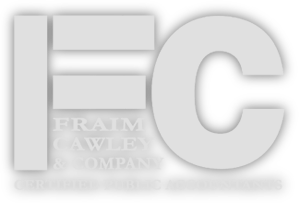Q: Which business entity saves the most tax – sole proprietor, LLC, S-Corp, or C-Corp?
A: For owner-operated businesses above roughly $50k profit, an S-Corp usually wins: it slashes self-employment tax on distributions without double taxation. Single-member LLCs add liability protection but no tax break, partnerships keep the full 15.3% SE hit, and C-Corps look cheap at 21% yet lose once you add dividend tax and QBI/PTET ineligibility.
TL;DR (big-picture)
- Sole prop = simple, but 15.3% SE tax on every dollar and zero liability protection.
- Single-member LLC: same tax as sole prop, adds a liability shield and future flexibility.
- Partnership / Multi-member LLC: extra filing complexity, still full SE tax unless passive (e.g., rentals).
- C-Corp 21 % rate is a mirage. Double taxation and loss of QBI/PTET erase the headline savings in most owner-operated businesses.
- S-Corp hits the sweet spot. Reasonable salary + dividend-like distributions avoids SE tax and keeps pass-through perks – best fit once profit >~$50k.
How should my business be taxed? Should I create an entity? And if so, what kind? How much am I going to pay on my income?
This is foundational information that every business owner should know, but it is still widely misunderstood. We’ll talk to people who have been in business for decades who cannot explain the differences.
In this article we’re going to go through all of the different business entity structure possibilities: when they work, when they don’t, and which one you should choose for your business.
We’ll break it down into the following sections:

Sole Proprietorships: The Default You Should Almost Never Keep
If you’re the only owner of your business and haven’t formed a separate legal entity (like an LLC or corporation), then you’re operating as a sole proprietorship (“sole” meaning only, and “proprietor” meaning owner). It’s the simplest and most common form of business structure, especially when you’re just getting started.
Why Many People Stick with a Sole Proprietorship
There are some practical advantages to this setup:
- It’s easy to start. You don’t have to file anything special to create a sole proprietorship. Just start doing business.
- No upfront formation costs. Unlike LLCs or corporations, you don’t have to pay state filing fees or hire someone to draft formation documents.
- No ongoing state fees. In most instances, you don’t have to pay annual renewal fees to the State Corporation Commission (SCC).
- Minimal paperwork. There are no requirements for annual meetings, minutes, or corporate recordkeeping.
- Simple tax setup. You can report business income and expenses directly on your personal tax return (Schedule C). You don’t even need a separate EIN (Employer Identification Number) unless you hire employees or want one for banking purposes.
The Downsides of a Sole Proprietorship
While a sole proprietorship is easy and inexpensive, it comes with significant downsides and risks. As your business grows, so do those risks and the structure becomes less and less advisable.
Here are the main drawbacks:
- 15.3% Self-Employment Tax on All Profits. Sole proprietors must pay the full 15.3% self-employment tax (covering both the employer and employee portions of Social Security and Medicare) on their net profit. The Social Security portion (12.4%) is only assessed on the first $176,100 of earnings (as of 2025), but the Medicare portion (2.9%) applies to all profits – with an extra 0.9% surcharge kicking in at higher income levels. There’s no built-in mechanism to reduce that exposure – unlike with S-Corps, which allow you to split your income and minimize payroll tax.
- No liability protection. You and the business are legally the same. That means if your business is sued or can’t pay its debts, your personal assets (like your house or bank accounts) are at risk.
- Harder to raise capital. Investors and lenders typically prefer formal business entities. A sole proprietorship doesn’t offer equity or shares, and it can look less credible to banks.
- No separation of business and personal identity. Since everything flows through your personal tax return, it can make recordkeeping messy and blur the line between personal and business finances.
- You can’t bring in partners. The structure is, by definition, tied to a single individual. If you want to bring on a partner or co-owner, you’ll need to switch to a different business type.
The liability risk on its own is sufficient to make the sole proprietorship inadvisable for almost any fully operational business. Even if you’re starting small, the potential exposure to lawsuits or debts can be significant – and without a separate legal entity, there’s nothing shielding your personal assets.
Forming an LLC is often worth it just for the liability protection, and in most cases it’s surprisingly affordable. In most states, annual renewal fees for LLCs range from $50 to $100. Some states are more expensive – California, for example, charges $800 per year – which can be more difficult to justify for hobby businesses or side hustles. Still, depending on the industry you are in and the liability associated with it, it may be worth the cost.
Beyond liability, sole proprietorships are structurally inflexible, which becomes a bigger issue as your business grows. If you already have an LLC and want to add a partner or convert to an S-Corp, that is a relatively easy change. It’s usually just a matter of amending your operating agreement or filing a short IRS form. Your tax ID (EIN), business bank accounts, contracts, and insurance policies typically all stay the same with no disruption.
But if you’re operating as a sole proprietorship, you can’t just “upgrade.” You have to start over from scratch:
- Form a new legal entity.
- Get a new EIN.
- Open new bank accounts.
- Update or reassign contracts.
- Notify vendors and customers.
- Possibly reapply for business licenses or insurance.
It’s not catastrophic, but it’s a hassle- a hassle you can avoid with a little foresight.
That’s why even when a sole proprietorship is perfectly fine from a tax perspective, many business owners still choose to form an LLC early on. Flexibility, protection, and long-term simplicity are often worth the small upfront cost.
Single-Member LLCs: Legal Protection, But Not a Tax Upgrade
Given the restrictions with sole proprietorships, what we typically recommend for new business owners is to set up a single-member LLC (SMLLC) – for all of the reasons mentioned above. It gives you legal protection and makes things much easier if you ever need to add a partner, adjust ownership, or elect S-Corp status later.
But it’s crucial to understand one thing upfront: single-member LLCs offer no tax savings over sole proprietorships. From a tax perspective, you are treated exactly the same.
That means:
- All of your business income is reported on Schedule C of your personal tax return.
- You do not file a separate business return.
- You do not run payroll for yourself.
- And most importantly, you pay the full 15.3% self-employment tax on every dollar of profit.
This surprises many people. We’ll often hear some variation of, “I’m getting absolutely killed on my taxes – should I set up an LLC to reduce them?”
The confusion stems from the dual nature of LLCs: they’re legal entities, but not tax classifications. For tax purposes, LLCs are assigned a default treatment – single-member LLCs are taxed as sole proprietorships and multi-member LLCs as partnerships. But you’re not locked into that. You can also elect to have an LLC taxed as an S-Corp or C-Corp if it better suits your situation.
By default, a single-member LLC is treated as a “disregarded entity” for tax purposes. This means that legally they are LLCs and provide normal LLC protections, but for tax purposes you disregard the entity and treat it as though it was owned by the taxpayer personally.
This default tax treatment can be both a benefit and a limitation, depending on where you are in your business. Early on – when profits are low – the simplicity is helpful. You get liability protection without needing to file a separate corporate return or run payroll for yourself. For many new or part-time businesses, that’s ideal.
As your profits increase, that simplicity comes at a cost. You’re still paying the full self-employment tax on everything, with no flexibility to reduce it. Once your profits approach or exceed $50,000, electing S-Corp status often makes sense to reduce your tax liability.
Partnerships and Multi-Member LLCs: All the Same Tax Problems, Plus More Paperwork
If you add even one partner to your LLC, the tax treatment changes – but not in a way that helps you. A multi-member LLC is, by default, taxed as a partnership. That means you now have to file a separate entity return (Form 1065) and issue a Form K-1 to each partner. So the paperwork gets more complex…but you still don’t get any tax benefits.
All of the profit is still subject to self-employment tax. Just like a single-member LLC or sole proprietorship, your share of the profits flows through to your personal return – and the IRS still hits it with the full 15.3% self-employment tax.
Many business owners assume that because they have limited liability under state law, they must be treated like limited partners for tax purposes. Limited partners do not pay SE tax on their share of profits. That would be nice, but that’s not how it works. The IRS and tax courts have consistently ruled that what matters is what you actually do in the business, not your legal title or the wording of your operating agreement.
If you’re actively involved (running the business, managing people, making decisions), then you’re treated as a general partner, and self-employment tax applies to all of your earnings.
This issue has been tested in court repeatedly, with cases like Renkemeyer, Campbell & Weaver, LLP v. Commissioner, 136 T.C. 137 (2011) and Castigliola v. Commissioner, T.C. Memo. 2017-62 making it clear: LLC members with limited liability can still be taxed as general partners if they’re materially involved in the business.
We discussed this issue at length in an article digging into partnership taxation, including strategies to avoid unnecessary SE tax. But the short version is this:
Multi-member LLCs give you the same tax burden as sole proprietorships and SMLLCs – with more complexity, and no built-in way to reduce self-employment tax.
One big exception: Real estate. If your multi-member LLC holds rental properties, then your share of the profits is generally not subject to self-employment tax in the first place. In those cases, partnership taxation is actually ideal – and there’s no reason to use an S-Corp. In fact, electing S-Corp status for rental holdings creates ownership limitations and some other potential headaches. For real estate partnerships, the default treatment is often the best one.
There are advanced structures that can solve the self-employment tax issue – like using an S-Corp as a buffer between you and the partnership – but that’s a more strategic move we’ll cover later.
C-Corporations: The Shiniest Option That Usually Costs You More
On paper, the C-Corporation (or “C-Corp”) looks attractive. It has a flat 21% federal tax rate on profits, liability protection, and access to things like tax-free fringe benefits and institutional investment. It’s also the required structure for most venture-backed startups.
For the overwhelming majority of small businesses C-Corps are usually the worst choice.
Why?
Double Taxation
The most obvious issue is double taxation. That 21% tax rate is paid at the corporate level on any profits. But whenever you actually distribute those profits to yourself, you pay the tax again at the personal level. For most taxpayers this second layer is another 15%-20% – with some high earners having to pay 23.8%.
And that’s only at the federal level. State income tax also has to be paid twice as well – once when profits are earned and again when distributions are made.
Compare that to a sole proprietorship, partnership, or S-Corp. Those are what are known as “pass-through entities”. Legally some of those are separate entities, but they do not generate their own federal tax bill. For tax purposes those profits “pass through” or “flow through” to the owner(s) at the individual level.
Tax is paid on the profits and that’s it. After that you can do whatever you want with the money. You can take it all out or leave it all in – that does not create a separate taxable event. That is simply you removing the already taxed earnings from your business.
However, that’s not how it works with a C-Corp, and that double taxation is the biggest drawback of the C-Corp. Even if you never take a distribution, those funds are still trapped inside the corporation – with a tax bill looming like the Sword of Damocles for the second you remove the funds. Leaving the funds in there indefinitely is also not an option. Eventually, the IRS expects those funds to come out (see Personal Holding Company rules and the Accumulated Earnings Tax).
No Pass-Through Entity Benefits
Pass-through entities also have a few other specific tax benefits associated with them.
Sole proprietorships, partnerships, and S-Corps are all eligible for the 20% Qualified Business Income Deduction (QBI). Partnerships and S-Corps are eligible for the Pass-Through Entity Tax Election (PTET).
Given that C-Corps are – by definition – not pass-through entities, they are ineligible for these benefits.
21% vs. 37% Comparison Is Fake Math
We discussed this at length in our article comparing C-Corps and S-Corps, but one of the most persistent myths online is the so-called “21% vs. 37%” tax arbitrage.
The argument goes: “Why would you ever pay 37% on your income when a C-Corp only pays 21%?”
But that’s just not how the tax code works.
The 37% individual rate is the top marginal rate and only applies to very high earners and only to income over certain thresholds. Most business owners pay far less than 37% when you calculate their effective tax rate.
By the time you factor in double taxation and the loss of QBI/PTET benefits, a properly structured S-Corp is almost always better for active business owners under a few million in annual profit. For a rundown on that math, see the article we referenced above.
When Does C-Corp Make Sense?
That doesn’t mean the C-Corp is never useful.
There are a few, very specific scenarios where it’s the right fit:
- You’re raising institutional capital from VCs or outside investors.
- You are a very high earner and plan to reinvest profits for many years without taking distributions.
- You plan to exit your business and may qualify for Section 1202 Qualified Small Business Stock (QSBS) treatment, which allows you to exclude up to $15 million in capital gains
- Even in this case, it does not mean that the C-Corp is necessarily the best choice, but simply that this is a benefit available that is not available in other structures and needs to be taken into account when deciding on the appropriate structure.
We’ve covered those edge cases – including hybrid C-Corp/S-Corp structures, QSBS sales, and NCTI setups – in previous articles. But unless you fall into one of those unusual buckets, the C-Corp is likely a mismatch for your business.
S-Corporations: The Default Answer for Most Profitable Businesses
For most small business owners earning over ~$50,000 in profit, the answer is simple: you should probably be an S-Corp.
S-Corporations (or “S-Corps”) are the sweet spot for active businesses that are profitable, owner-operated, and not raising outside capital. They have the benefits of LLCs and partnerships, but with some very important tax advantages.
Here’s why they’re usually the best option.
Avoiding Self-Employment Tax on Profits/Distributions
As mentioned in the previous sections, with all other pass-through entities (sole proprietorships, partnerships, and LLCs taxed as sole proprietorships or partnerships), you pay 15.3% self-employment tax on all of your net profit. S-Corps change that.
Instead of treating all profits as self-employment earnings, an S-Corp allows you to split your income into two buckets:
- A reasonable salary, which is subject to payroll taxes (Social Security and Medicare). This is done via a bona fide payroll, and you receive a W-2 from your company at the end of the year.
- The remaining profit, which you can take as a distribution, is not subject to SE tax.
That means if your business earns $100,000 and you pay yourself a $50,000 salary, you only pay payroll taxes on that $50,000. The remaining $50,000 avoids the 15.3% tax – saving you $7,650 right off the top.
Unlike a C-Corp, you’re not subject to double taxation. The profits flow directly to your personal return and there is no additional tax for distributing them to yourself.
Important exception: If you determine that the lowest reasonable salary you could pay yourself is equal to your total business profit, then there’s no leftover profit to take as a distribution – and no self-employment tax savings. An in-depth discussion on how to determine a reasonable salary is covered in a separate article.
Similarly, if you’ve already maxed out your Social Security tax for the year ($176,100 in wages for 2025), the SE tax savings are smaller. The S-Corp structure still offers other planning advantages, but in these cases, the payroll tax benefit may be limited or nonexistent.
Eligibility for QBI and PTET
Like other pass-through entities, S-Corps also qualify for the 20% QBI deduction and the PTET. We note it separately here for two reasons:
- Wages matter. Shareholders providing services are required to pay themselves a reasonable salary from their S-Corp. Given that QBI calculations take wages into account, this creates some opportunities that are unique to S-Corps for optimizing that QBI deduction
- C-Corps get neither. A lot of online advice compares C-Corps to S-Corps without mentioning that C-Corps are excluded from both of these powerful benefits.
What’s the Catch?
The IRS doesn’t let you get around payroll taxes entirely. If you work in the business, you must pay yourself a “reasonable salary” for the work you do. If that salary is too low, the IRS can recharacterize distributions as wages – and hit you with penalties.
We’ve cover that in detail in previous discussions, but the short version is this: pay yourself a fair wage, document how you came up with it, and you’ll likely stay out of trouble.
There are also shareholder restrictions:
- Limited to 100 or fewer shareholders.
- Only one class of stock is allowed. You can have voting and non-voting shares – but no preferred returns or waterfall structures.
- Shareholders must generally be U.S. individuals. Partnerships, C-Corps, most LLCs, and foreign persons are not eligible. Certain estates, grantor trusts, and 501(c)(3) nonprofits are permitted, although those are not particularly common.
- Distributions and income allocations must follow ownership percentages exactly. No special allocations of profit, loss, or distributions like partnerships allow.
For most small business owners, these limits are irrelevant. But they do matter if you’re planning to raise capital or bring on certain types of partners.

Scenarios: Putting the Math to the Test
Now that we’ve talked about this at length, let’s go through some more in-depth, real-world math.
We’ll compare how sole proprietorships, S-Corps, and C-Corps stack up at five different profit levels: $25k, $50k, $100k, $250k, and $500k. For consistency, all scenarios assume:
- No other income, deductions, or tax credits beyond the business.
- Taxpayer is single with no dependents.
- S-Corps include a reasonable salary. The exact figure will vary in real life depending on your industry, role, geographic location, and other case-specific factors. These scenarios reflect plausible examples, but determining a “reasonable salary” requires a facts-and-circumstances analysis, which we’ve discussed in our S-Corp reasonable compensation guide.
- C-Corp scenarios assume all profits are distributed to the shareholder and no wages are paid from the business.
- State income taxes and PTET are not included. In most cases, including them would generally make S-Corps look even better and C-Corps look even worse – especially in high-tax states.
How do things shape out?
| Profit Level | Entity Type | Income Taxes | Distribution Taxes | Social Security / Medicare | Total Taxes Paid |
| $25,000 | Sole Proprietorship | $900 | $0 | $3,800 | $4,700 |
| S-Corp | $900 | $0 | $3,800 | $4,700 | |
| C-Corp | $5,300 | $0 | $0 | $5,300 | |
| $50,000 | Sole Proprietorship | $3,600 | $0 | $7,700 | $11,300 |
| S-Corp | $3,500 | $0 | $4,600 | $8,100 | |
| C-Corp | $10,500 | $0 | $0 | $10,500 | |
| $100,000 | Sole Proprietorship | $12,300 | $0 | $15,300 | $27,600 |
| S-Corp | $11,600 | $0 | $7,700 | $19,300 | |
| C-Corp | $21,000 | $5,800 | $0 | $26,800 | |
| $250,000 | Sole Proprietorship | $48,900 | $0 | $29,100 | $78,000 |
| S-Corp | $41,800 | $0 | $11,500 | $53,300 | |
| C-Corp | $52,500 | $30,200 | $0 | $82,700 | |
| $500,000 | Sole Proprietorship | $136,600 | $0 | $36,300 | $172,900 |
| S-Corp | $115,800 | $0 | $23,000 | $138,800 | |
| C-Corp | $105,000 | $77,200 | $0 | $182,200 |
What the Numbers Tell Us
At the $25,000 level, the S-Corp provides no benefit – your reasonable salary would almost certainly equal your total profit, leaving nothing to treat as a distribution.
By $50,000, you start to see modest savings. And from that point forward, the tax advantage of an S-Corp becomes increasingly substantial. By $100,000 and beyond, the gap between the S-Corp and the other structures grows quickly – saving tens of thousands in self-employment and income taxes in fairly short order.
Also worth noting: even in scenarios where the C-Corp appears competitive on paper, you’re not contributing anything to Social Security. While the future of Social Security benefits is uncertain, paying into the system still typically yields more value than simply losing the same amount to general income tax.
Conclusion
Bottom line: if you’re actively running a profitable business and you’re not planning to raise outside capital, an S-Corp is probably your best option. It gives you liability protection, major tax savings, and access to powerful planning tools without the major downsides associated with the other tax structures.
FAQ
Why does an S-Corp beat an LLC taxed as a sole prop?
An S-Corp lets you split profit into salary (payroll-taxed) and distributions (no SE tax). A default LLC taxes every dollar as SE income.
Is the C-Corp’s 21 % rate ever worth it?
Only when you’ll reinvest profits for years, plan a QSBS stock sale, or need venture capital. Otherwise, double taxation and lost QBI/PTET wipe out the benefit.
Can I start as an LLC and switch to S-Corp later?
Yes – file Form 2553 and run payroll once profit justifies it. Bank accounts, EIN, and contracts stay the same.
Does a rental real-estate LLC need S-Corp status?
Usually not. Rental income is passive, so it already avoids SE tax. S-Corp status adds payroll and ownership limits without savings.
What profit level makes an S-Corp worthwhile?
Rough rule: when savings from untaxed distributions exceed payroll & compliance costs – often around $50k–$60k net profit.
Any accounting, business, or tax advice contained in this communication, including attachments and enclosures, is not intended as a thorough, in-depth analysis of specific issues, nor a substitute for a formal opinion, nor is it sufficient to avoid tax-related penalties.








